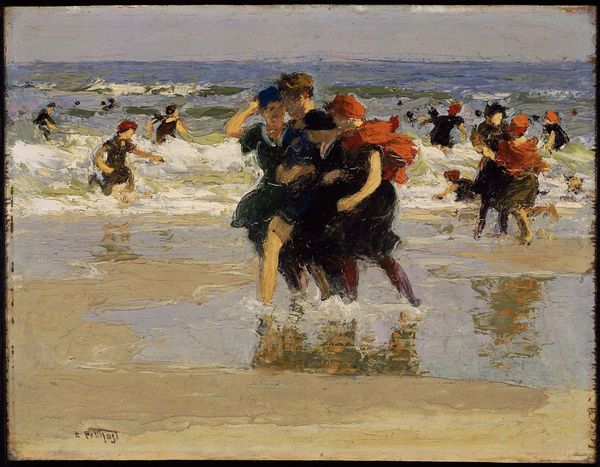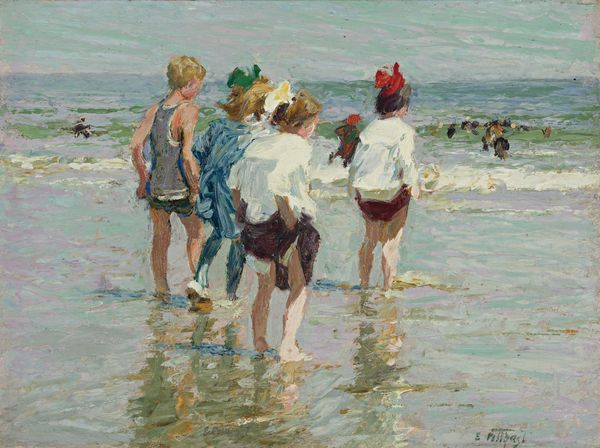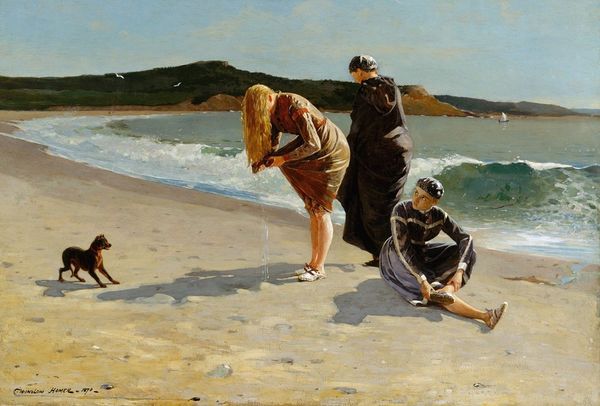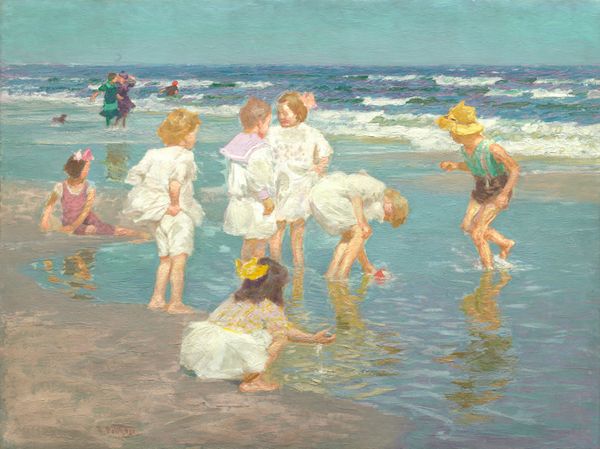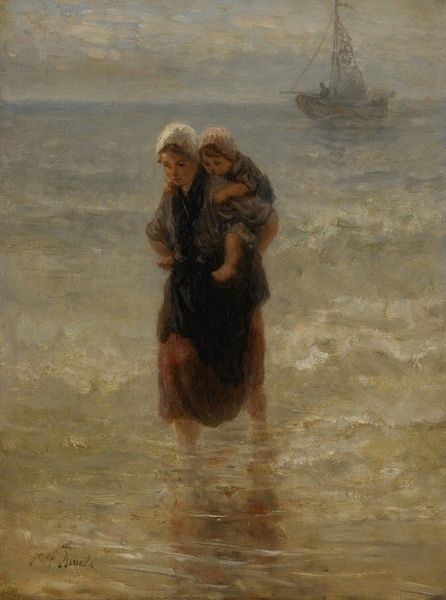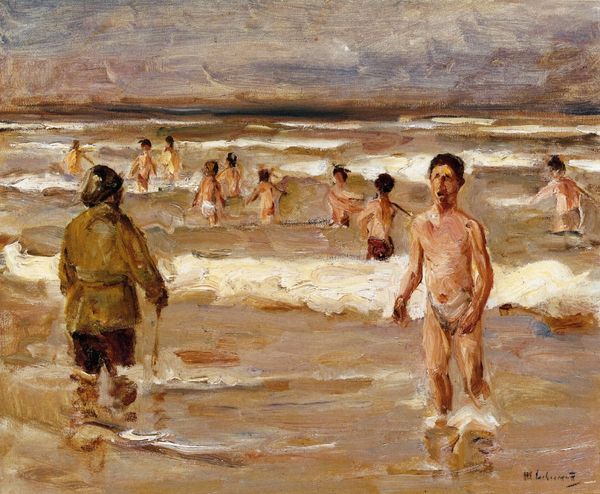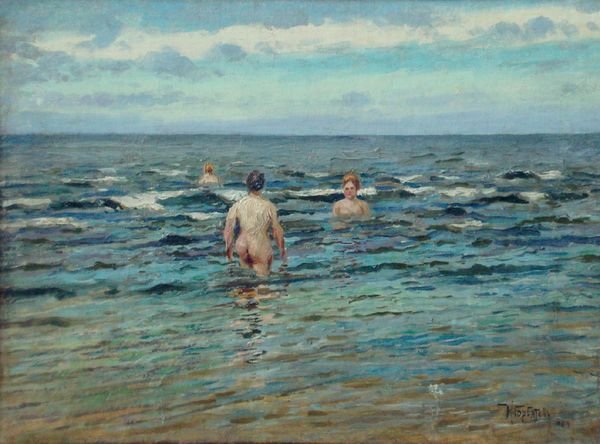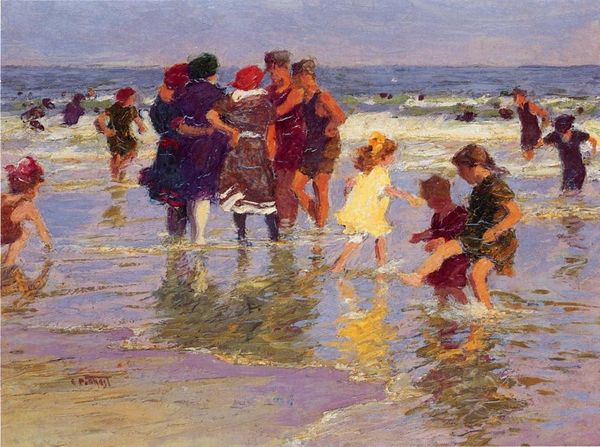
Copyright: Public domain
Editor: So, here we have Edward Henry Potthast's "At the Beach," painted in 1918 using oil paint. There's something so energetic about it. The way the figures are caught in motion with all those visible brushstrokes! How would you begin to interpret this piece? Curator: Immediately, I’m drawn to the materiality. Look at the thickness of the paint, the obvious strokes. This isn't just about depicting a scene; it's about the *doing*, the labor involved. Plein-air painting in 1918 wasn't simply leisure; it was a logistical undertaking. What does the visible struggle of the artist to capture this fleeting moment on canvas tell us about its value as an art object? Editor: That's a great point. The struggle to capture a specific scene creates a very powerful end result. Curator: Exactly! Think about the social context too. Who had access to these materials, this kind of leisure time? Impressionism often gets a bad rap for being "pretty," but here, the materials and the act of painting itself become a record of a specific class and time. And consider the shift – oil paint traditionally was a luxury good available mostly to upper classes. Now, does "genre painting" start to cross over into social commentary simply because it displays its mode of manufacture? Editor: I never really thought about it in such socioeconomic terms. Curator: Materiality pushes us to question traditional boundaries, high art vs. craft for instance. Is Potthast elevating everyday leisure or simply reproducing it? Editor: This perspective really changes my view of Impressionism. Thanks for your time, that’s been incredibly insightful. Curator: My pleasure. Always good to look beyond the surface.
Comments
No comments
Be the first to comment and join the conversation on the ultimate creative platform.

